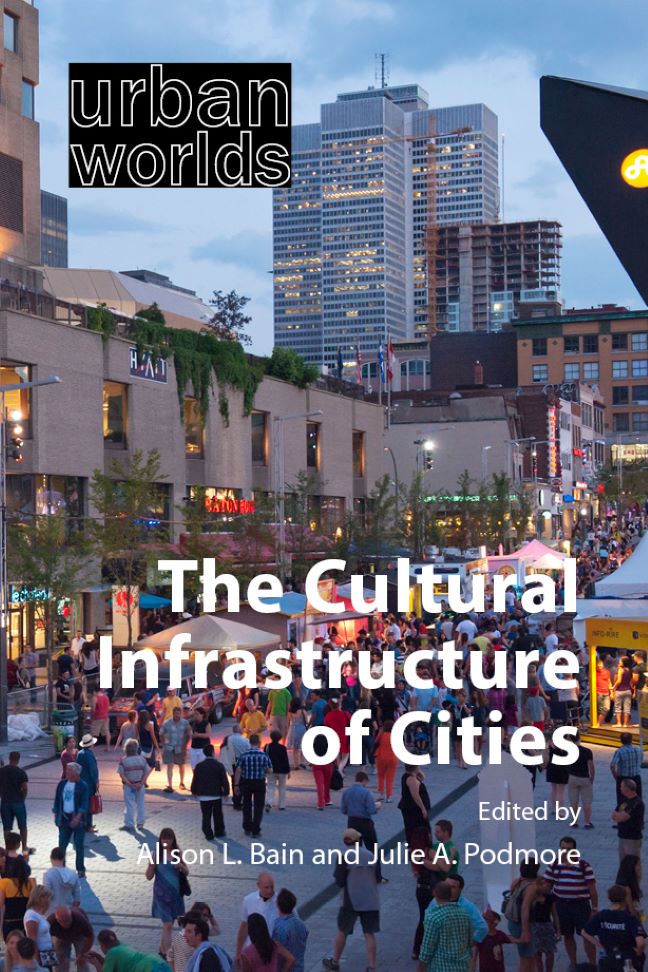Part I - Producing Culture
Published online by Cambridge University Press: 23 January 2024
Summary
Cultural production – its services, activities and networks – are embedded in, and transformative of, places. Within cities, residential, industrial and commercial neighbourhood sites that fall into disrepair are revalorized through creative activity (Rantisi & Leslie 2010). Contemporary urban planning and policy solutions have leveraged the culture-capital compromise wherein the “authenticity” of artistic labour and the appeal of creative lifestyles (Zukin 1982) are employed to breathe new life into decaying urban industrial infrastructure – store fronts, strip malls, schools, religious institutions, factories and warehouses (Zukin 2010).
Sites of cultural production – where the process of artistic creation and art-making result in the fabrication of objects or activities – are often mythologized in the public imagination, yet they have straightforward infrastructural requirements. Spaces of cultural production demand the permanent storage of, and access to, tools, equipment and materials which suggests the need for stable locations that do not necessarily require the co-presence of audiences (Bingham-Hall & Kaasa 2018). Art schools are one such key site of cultural production, that resemble laboratories or factories of research, experimentation and innovation. In art schools, emerging communities of artists work at the avant-garde edge of their disciplines, looking “to the past and tradition for inspiration” but their “main currency” is “hip coolness, progressive ideas and place in the contemporary art scene” (Becker 2009: 38). Within this world of culture-making, it is the makers themselves who are highly esteemed, and those cultural workers – those artists – who gain critical attention for their labour who are most admired, along with the spaces they inhabit (Becker 2009).
Beyond art schools, art studios have long been privileged as sites for undisturbed experimentation with materials, sound, light, movement and ideas that constitute the making of cultural work as well as the formation of professional identities (Bain 2004, 2005). The studio is celebrated as a “space for ongoing as well as finished projects, colour, paintings, scraps, scribbles, prototypes, ideas, chaos, order, language” (Sjöholm 2014: 505– 6). As a site to showcase oneself to curators and collectors, studios are not just places to make and store artwork. Rather, artists are collectors of objects and archivists of their own work and studios become places “where careers are stored and developed” and “where artists look both forward and backward in their practice” (Hawkins 2017: 91).
- Type
- Chapter
- Information
- The Cultural Infrastructure of Cities , pp. 29 - 32Publisher: Agenda PublishingPrint publication year: 2023



